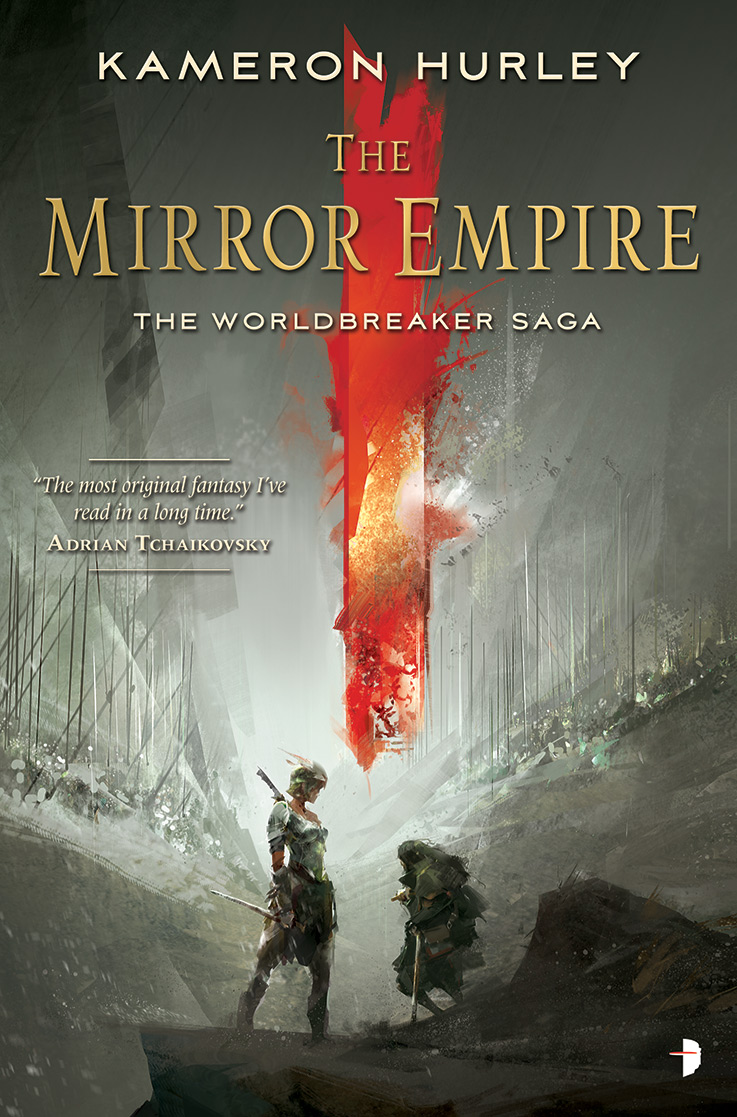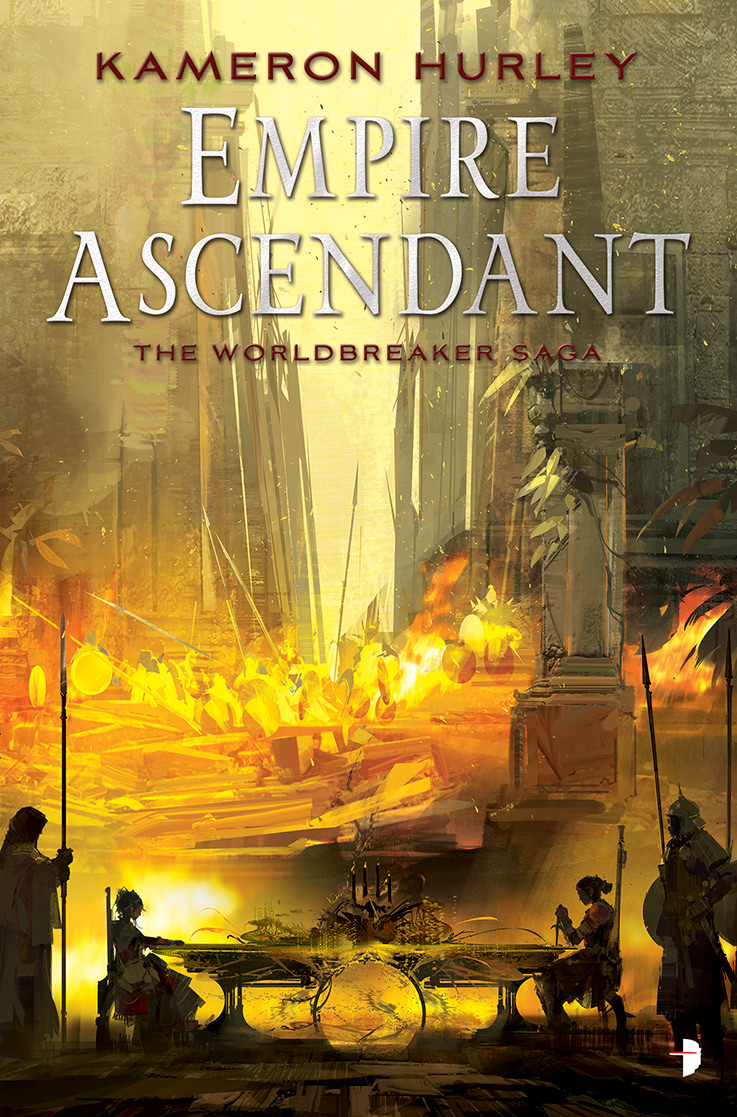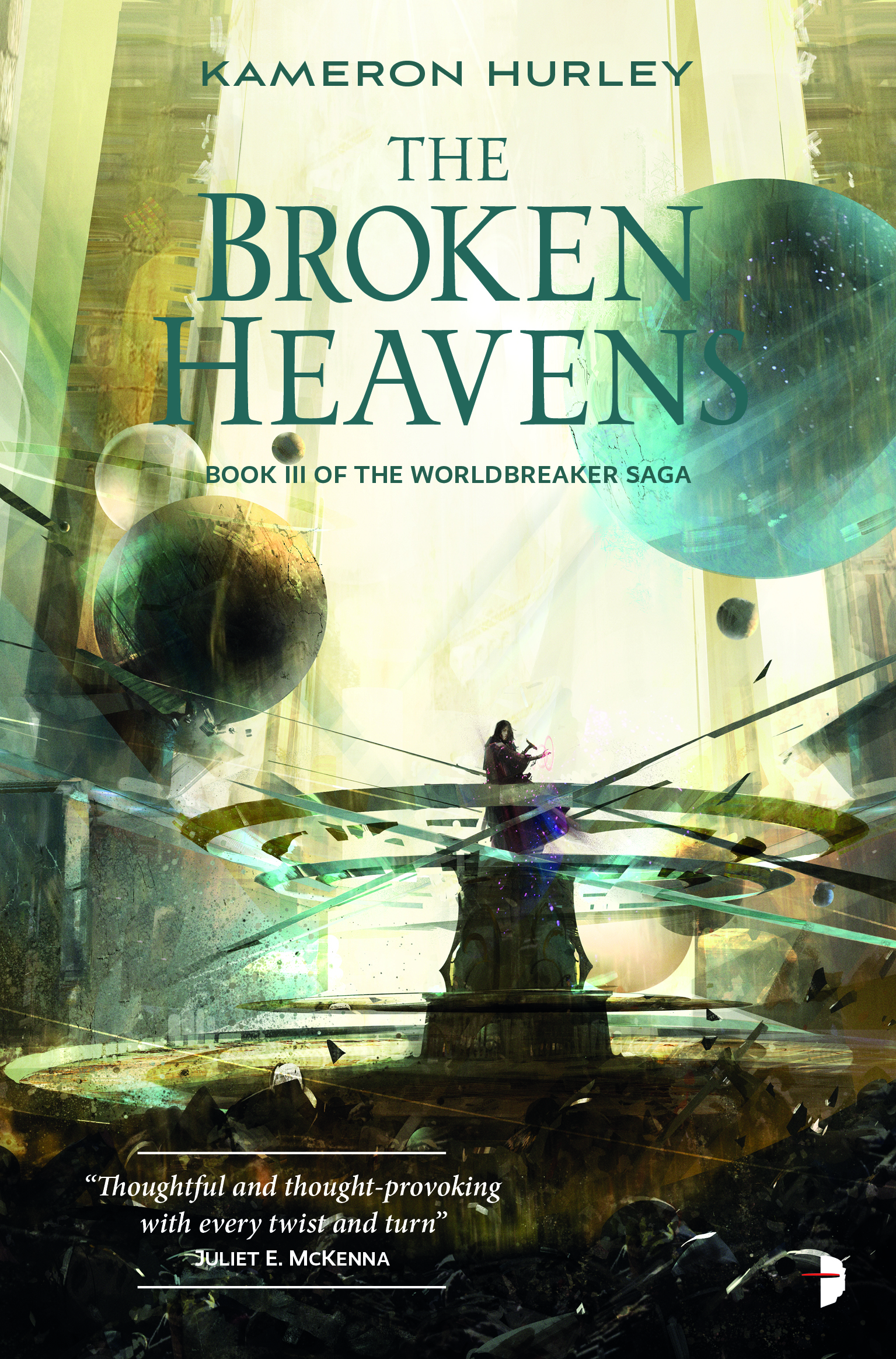Like a close-up magician showing you just how much fresh wonder can still be squeezed out of a deck of cards, Hurley can make you believe that epic fantasy is vital, mysterious, wild, and deeply connected to our own moral, social, and political concerns.
Chicago Review of Books
The Worldbreaker Saga follows the epic journey of five unlikely heroes thrust to the center of an ancient recurring event… when multiple versions of their worlds – and themselves – begin to annihilate one another.
Buckle up, buttercup.
The World
“… the most original fantasy I’ve read in a long time, set in a world full of new ideas, expanding the horizons of the genre. A complex and intricate book full of elegant ideas and finely-drawn characters”
Adrian Tchaikovsky
The Worldbreaker Saga takes place in a world ruled by the power of celestial objects called satellites that bestow unique powers on those who can channel them. No two satellites are ever in the sky at one time, ensuring no channeler retains dominance forever.
But every two thousand years, the satellites all appear in the sky together, including a satellite that only appears for this single period: the one called Oma.
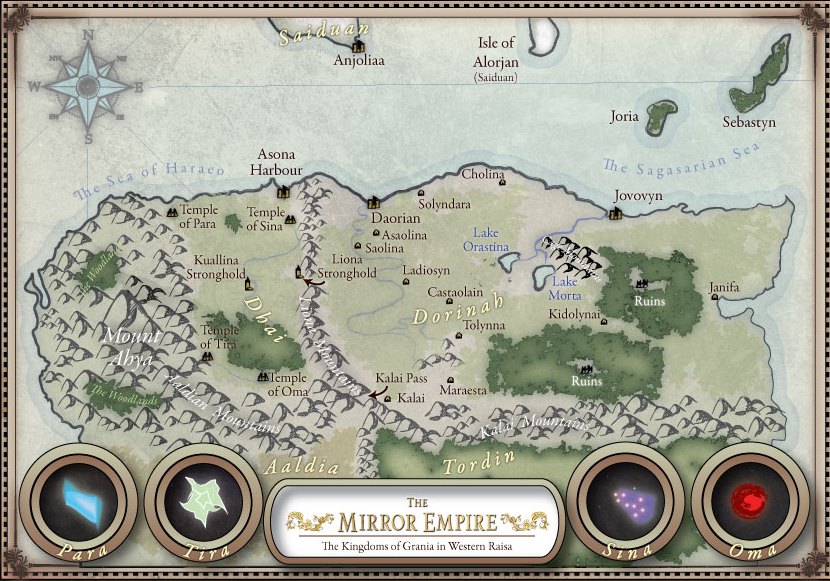
During this event, people begin to come through the seams between alternate version of the world, where choices were different, and doppelgangers abound. Here, many plants are semi-sentient, toxic, lumbering beasts, and the people are locked in old conflicts of colonialism and passivity, until the days when the objects in the sky come together again.
When the heavens break, only one world will survive.
And many will perish.
The People
“This is a hugely ambitious work, bloody and violent, with interestingly gender-flipped politics.”
Library Journal (STARRED REVIEW)
The Dhai are a polyamorous matriarchy with a consent-based, pacifist culture. Personal autonomy is emphasized, so long as it doesn’t endanger others, as the community itself ultimately matters more than individual violence or arrogance.
Gender is considered fluid, and individuals choose from five genders: male passive, male assertive, female assertive, and a neutral “they.” Rulers are usually the most magically gifted child of the current ruler who can bear children. Marriages often consists of 3-16 individuals, sometimes more or less. Slavery is considered an abomination.
The Saiduan are a militaristic, patriarchy, slave-owning culture with three genders (male, female, ataisa) which are assigned to individuals by the state and are considered immutable. They are ruled by a Patron who is generally chosen through mortal combat with any male siblings. Marriages usually only happen between a single man and up to four wives or ataisa spouses. They own slaves acquired throughout the continent, and anyone in Saiduan can become a slave due to misfortune.
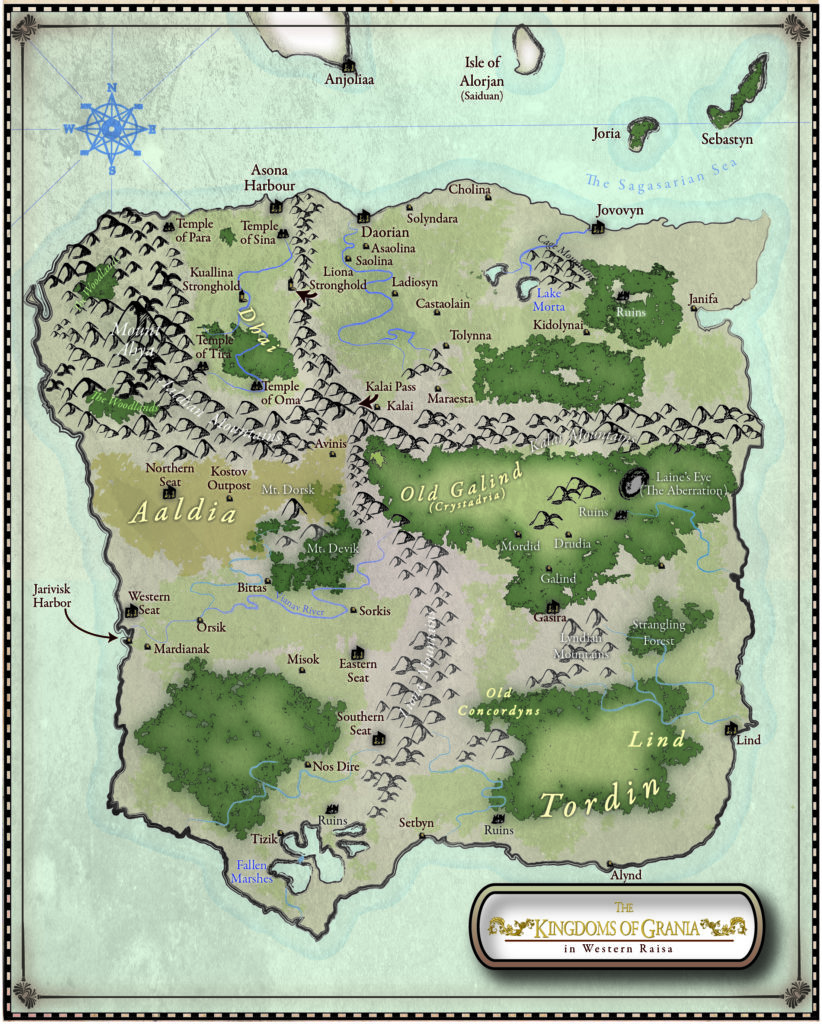
The Dorinah are a brutal matriarchy with fixed female/male roles. They are ruled by a line of mysterious queens who are unrelated to the general populace. Men are considered second class citizens, with few rights beyond those of personal property, and there is a strict social hierarchy. Men who are considered unfit to sire children are sacrificed to their goddess, Rhea. Those who remain are often married into group so sisters; one man to three or more women. They practice race-based slavery and enslave the neighboring Dhai, who they have kept as slaves they call dajians for more than five hundred years.
The Magic
“This is epic fantasy at its best! Every fantasy reader should read this series!”
Bull Spec Magazine
The magic system in the Worldbreaker Saga relies on the innate ability and skill of those with the predisposition to call on the power of stars or satellites that move in and out of the sky over the world of Raisa. Their orbits are not fixed, and while more or less regular, inexact. These fickle satellites and their erratic orbits often play havoc with the politics of those on the ground, as who has the ability to channel their power and who doesn’t can change swiftly.
Sina
Sinajistas call on the power of the star Sina, a purple satellite that appears every 15-18 years. Those who can channel its power can capture life energy, create and remove wards, and conjure and control fire. In a few rare instances, sinajistas can restore a soul to the body of one newly dead, but to raise one more than a few minutes after death, the help of a tirajista is required.
Tira
Tirajistas call on the power of the star Tira, a green satellite that appears every . Those who can call on Tira have a very fine control over plants and living flesh. They can heal grievous wounds, assist sinajistas in raising the dead, regrow limbs, create wards, and train plants and trees to grow quickly and in whatever shape or manner they desire, depending on the tirajista’s skill.
Para
Parajistas call on the power of the star Para, a blue satellite that appears every . Those who can call on Para can use the power of air to levitate, manipulate weather, create shields, and tornadoes. Rarely, they may also be immune to wards.
Oma
Omajistas only present once every two thousand years, when the red-glowing satellite Oma begins to enter the sky. They have the same abilities as those who can channel the other satellites, and also gain additional, unique powers, such as the ability to open gateways across distances or between realities.
Double/Triple Channelers
Those who can tap into the power of more than one satellite are often called double or triple channelers. They are rare, and generally their ability to call on one star is easier and more powerful than on their secondary or tertiary star.
The Wiki
Explore the world(s) of Raisa with access to the complete wiki for the Worldbreaker Saga. Note that some entries may contain spoilers.
Series Content Cautions
This series contains adult themes and situations, including: self-harm, genocide, murdered children, abuse, kidnapping, blood, PTSD, sexual assault against men, racial and religious discrimination/slavery, violence, vomiting, physical abuse, abusive relationships, war, torture, gore, mutilation, bullying, death of parent, death by fire, alcohol/drunkenness, smoking, body horror, cannibalism.
